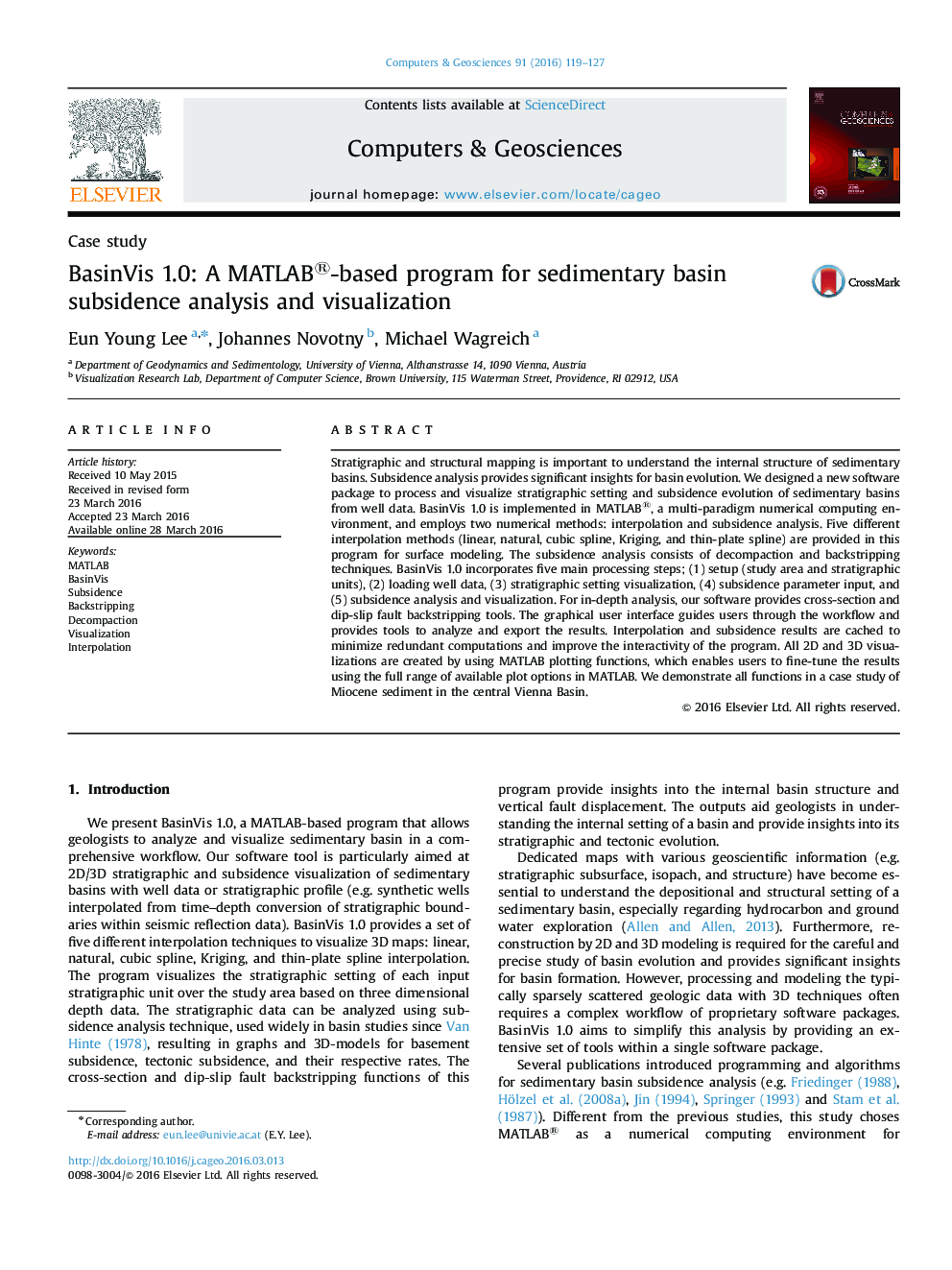| Article ID | Journal | Published Year | Pages | File Type |
|---|---|---|---|---|
| 506810 | Computers & Geosciences | 2016 | 9 Pages |
•We propose a framework for sedimentary basin subsidence analysis and visualization.•BasinVis 1.0 is implemented in MATLAB for programming and 2D/3D visualization.•Our framework provides interpolation, decompaction and backstripping fuctionalities.•The Vienna Basin was selected as an example study.•Our software is available at www.geologist-lee.com.
Stratigraphic and structural mapping is important to understand the internal structure of sedimentary basins. Subsidence analysis provides significant insights for basin evolution. We designed a new software package to process and visualize stratigraphic setting and subsidence evolution of sedimentary basins from well data. BasinVis 1.0 is implemented in MATLAB®, a multi-paradigm numerical computing environment, and employs two numerical methods: interpolation and subsidence analysis. Five different interpolation methods (linear, natural, cubic spline, Kriging, and thin-plate spline) are provided in this program for surface modeling. The subsidence analysis consists of decompaction and backstripping techniques. BasinVis 1.0 incorporates five main processing steps; (1) setup (study area and stratigraphic units), (2) loading well data, (3) stratigraphic setting visualization, (4) subsidence parameter input, and (5) subsidence analysis and visualization. For in-depth analysis, our software provides cross-section and dip-slip fault backstripping tools. The graphical user interface guides users through the workflow and provides tools to analyze and export the results. Interpolation and subsidence results are cached to minimize redundant computations and improve the interactivity of the program. All 2D and 3D visualizations are created by using MATLAB plotting functions, which enables users to fine-tune the results using the full range of available plot options in MATLAB. We demonstrate all functions in a case study of Miocene sediment in the central Vienna Basin.
